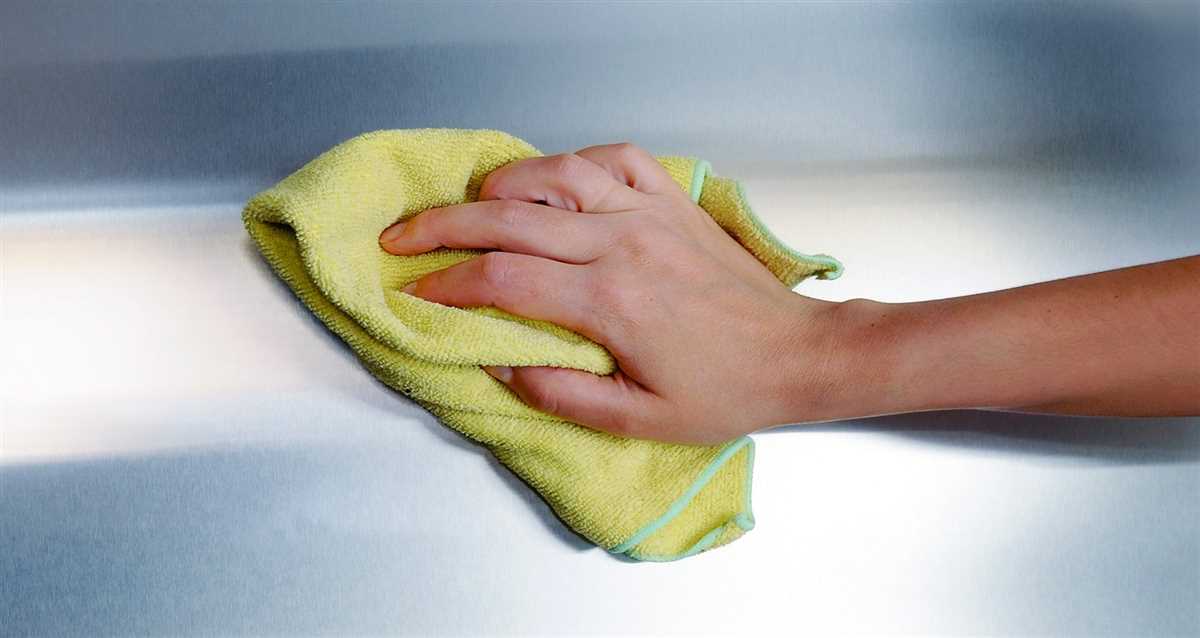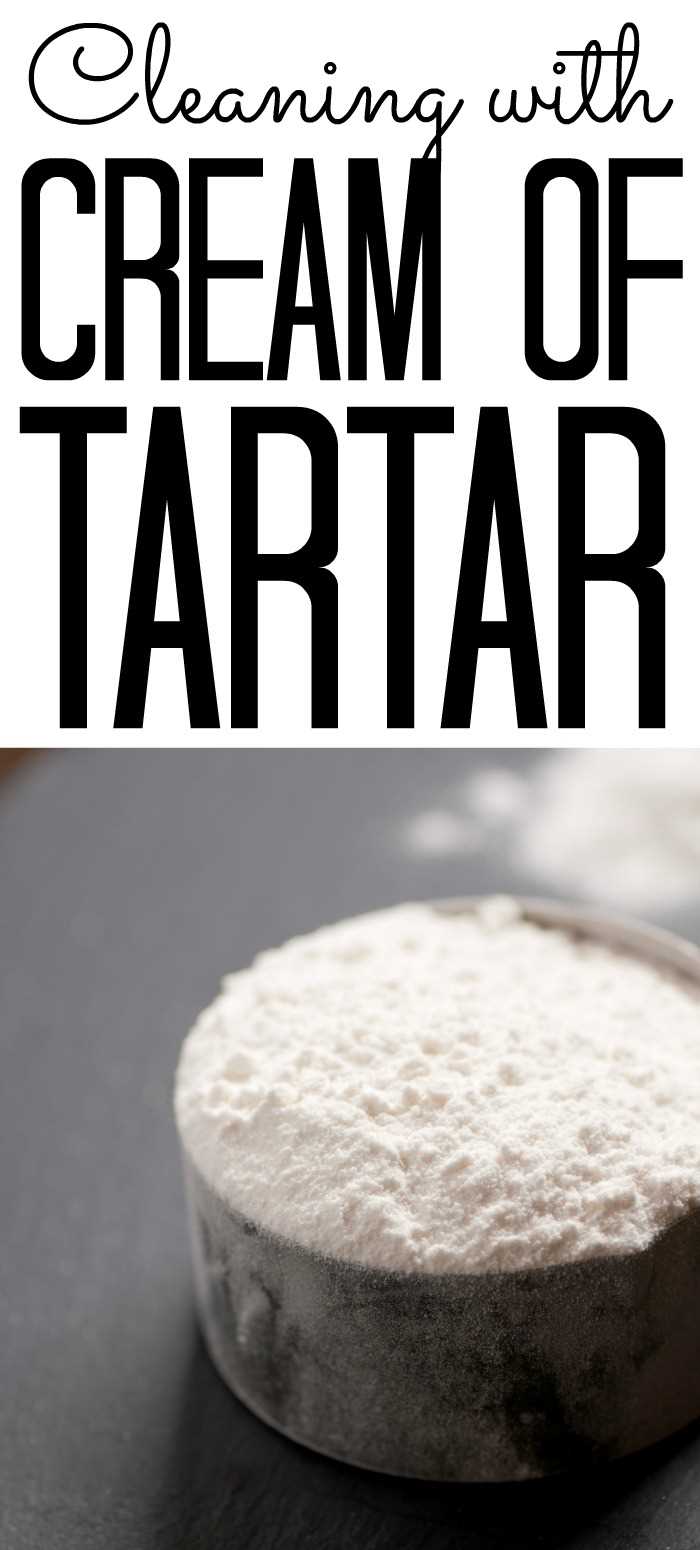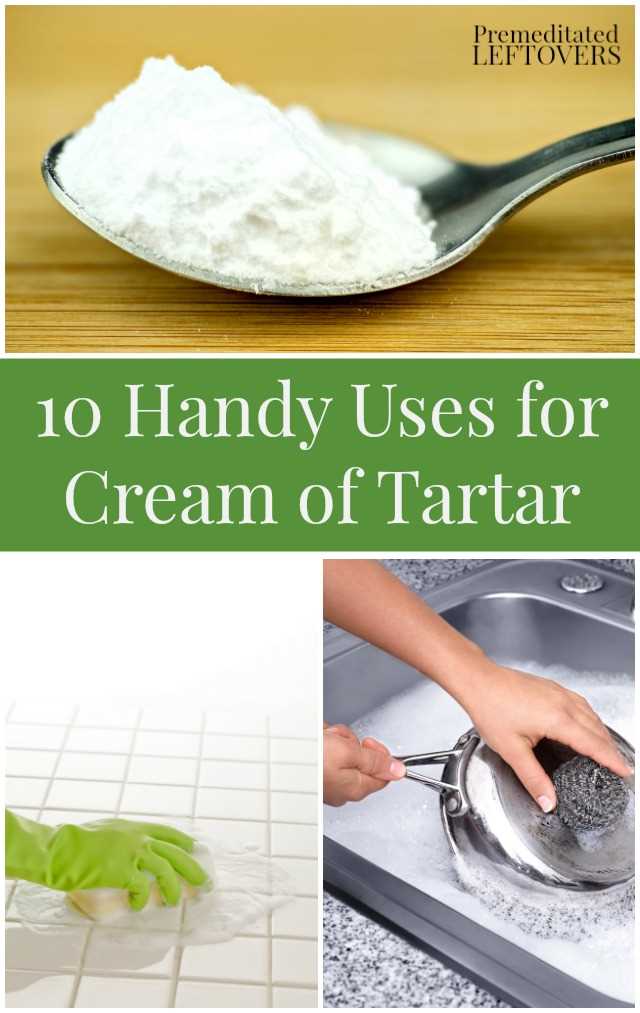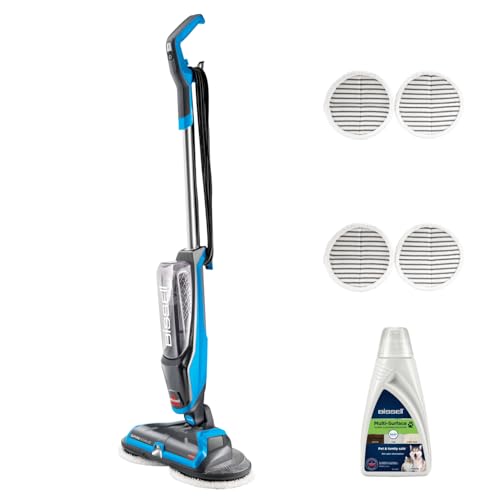
Cream of Tartar, also known as potassium bitartrate, is a common ingredient found in many kitchens. It is commonly used in cooking and baking, but did you know that it also has some surprising uses in cleaning? In this article, we will explore 10 unexpected ways you can use cream of tartar to clean your home.
1. Removing stains from clothing: Cream of tartar can be used to remove stubborn stains from clothing. Simply mix it with a little water to form a paste, apply it to the stain, and let it sit for a few minutes before washing as usual.
2. Cleaning stainless steel: Cream of tartar can be used to clean and polish stainless steel surfaces, such as sinks and appliances. Mix it with a little water to form a paste, apply it to the surface, and scrub gently with a cloth or sponge. Rinse thoroughly and dry for a clean, shiny finish.
3. Removing rust: Cream of tartar can also be used to remove rust from metal surfaces. Mix it with equal parts vinegar to form a paste, apply it to the rusted area, and let it sit for a few hours. Scrub gently with a brush and rinse thoroughly.
4. Cleaning tile grout: Cream of tartar can help remove dirt and grime from tile grout. Mix it with a little water to form a thick paste, apply it to the grout lines, and let it sit for a few minutes. Scrub gently with a toothbrush or grout brush, and rinse with water for sparkling clean grout.
5. Removing hard water stains: Cream of tartar can be used to remove hard water stains from faucets, showerheads, and other fixtures. Mix it with a little hydrogen peroxide to form a paste, apply it to the stained area, and let it sit for a few minutes. Scrub gently with a cloth or sponge, and rinse thoroughly.
6. Cleaning and brightening copper: Cream of tartar can be used to clean and brighten copper pots, pans, and other copper items. Mix it with equal parts vinegar to form a paste, apply it to the copper surface, and let it sit for a few minutes. Scrub gently with a cloth or sponge, rinse thoroughly, and dry for a shiny finish.
7. Removing burnt-on food: Cream of tartar can help remove burnt-on food from pots and pans. Fill the pan with water and a few tablespoons of cream of tartar, and bring it to a boil. Let it simmer for a few minutes, then scrub gently with a brush. Rinse thoroughly for a clean, fresh start.
8. Polishing silver: Cream of tartar can be used to polish silverware and remove tarnish. Mix it with a little water to form a paste, apply it to the silverware using a cloth or sponge, and rub gently. Rinse thoroughly and dry for shiny, tarnish-free silver.
9. Cleaning and freshening upholstery: Cream of tartar can be used to clean and freshen upholstery. Mix it with a little water to form a paste, apply it to the stained area, and let it sit for a few minutes. Scrub gently with a cloth or sponge, and then blot with a clean, damp cloth to remove any residue.
10. Removing crayon marks: Cream of tartar can also be used to remove crayon marks from walls and other surfaces. Mix it with a little water to form a paste, apply it to the marked area, and let it sit for a few minutes. Scrub gently with a cloth or sponge, and rinse thoroughly.
Next time you’re doing some cleaning, don’t forget about the hidden cleaning powers of cream of tartar. With its surprising uses and natural cleaning properties, it’s a must-have item for any cleaning arsenal.
Surprising Uses for Cream of Tartar in Cleaning
1. Removing Stains
Cream of tartar can be used to remove stains from various surfaces. For stubborn stains on fabrics, create a paste by mixing cream of tartar with water and apply it to the stain. Let it sit for a few minutes before rinsing with water. For coffee or tea stains on mugs or cups, sprinkle cream of tartar on a damp cloth or sponge and rub the stain until it disappears.
2. Cleaning Brass and Copper
To clean brass or copper items, make a paste using equal parts cream of tartar and vinegar. Apply the paste to the tarnished areas and let it sit for a few minutes. Scrub the item gently with a soft cloth or sponge, then rinse with water and dry thoroughly.
3. Removing Rust
Cream of tartar can be used to remove rust stains from metal surfaces. Mix cream of tartar with a few drops of hydrogen peroxide to create a paste. Apply the paste to the rusted area and let it sit for a few minutes. Scrub the area with a brush or sponge, then rinse with water.
4. Cleaning Stainless Steel
To remove stains and fingerprints from stainless steel appliances, make a thick paste by mixing cream of tartar with a few drops of water. Apply the paste to the stainless steel surface and gently scrub in a circular motion using a soft cloth or sponge. Rinse with water and dry with a clean cloth.
5. Cleaning Tile Grout

Dirty and discolored grout can be cleaned using cream of tartar. Mix cream of tartar with water to create a paste, then apply the paste to the grout lines using a toothbrush. Scrub the grout in circular motions, then rinse with water.
6. Cleaning Pots and Pans
To remove stubborn stains from pots and pans, sprinkle cream of tartar on the surface and scrub with a damp sponge or cloth. Rinse with water and dry thoroughly.
7. Removing Carpet Stains
Cream of tartar can also be used to remove carpet stains. Mix cream of tartar with a few drops of lemon juice to create a paste. Apply the paste to the stain and let it sit for a few minutes. Blot the stain with a clean cloth or sponge, then rinse with water.
8. Cleaning Silverware
Make a paste using cream of tartar and water, then apply it to tarnished silverware. Rub the paste onto the silverware using a soft cloth or sponge, then rinse with water and dry thoroughly.
9. Removing Soap Scum
To remove soap scum from shower doors or tiles, make a paste using cream of tartar and a few drops of dish soap. Apply the paste to the soap scum and let it sit for a few minutes. Scrub the area with a sponge or brush, then rinse with water.
10. Cleaning Glassware
Cream of tartar can be used to remove stains and cloudiness from glassware. Mix cream of tartar with water to create a paste, then apply it to the glassware and scrub gently. Rinse with water and dry with a clean cloth.
Removing Stains from Clothes and Carpets
When it comes to stubborn stains on clothes and carpets, cream of tartar can be your secret weapon. Here are some surprising uses of cream of tartar for removing stains:
1. Wine Stains:
If you have accidentally spilled red wine on your clothes or carpet, don’t panic. Mix equal parts of cream of tartar and lemon juice to form a paste. Apply the paste to the stain and let it sit for a few minutes. Gently scrub the stain with a soft brush or cloth, then rinse with warm water.
2. Grease Stains:
Cream of tartar can help eliminate stubborn grease stains. Make a paste by mixing cream of tartar with a small amount of water. Apply the paste to the stained area and let it sit for about 30 minutes. Rinse with warm water and repeat if necessary.
3. Coffee and Tea Stains:

Remove coffee and tea stains from clothes and carpets by mixing cream of tartar with a little bit of hydrogen peroxide. Apply the mixture to the stain and let it sit for a few minutes. Rinse with warm water to reveal stain-free fabric or carpet.
4. Ink Stains:
If you accidentally get ink on your clothes or carpets, mix equal parts of cream of tartar with lemon juice to create a paste. Apply the paste to the ink stain and let it sit for about 10 minutes. Rinse with warm water and repeat if necessary.
5. Blood Stains:
To remove blood stains, make a paste by mixing cream of tartar with cold water. Apply the paste to the stain and let it sit for about 30 minutes. Rinse with cold water and repeat if needed. Give it a final wash with a mild detergent to completely remove the stain.
6. Rust Stains:
If you have rust stains on your clothes or carpets, mix cream of tartar with lemon juice to make a paste. Apply the paste to the rust stain and let it sit for about 30 minutes. Gently scrub the stain with a soft brush or cloth, then rinse with warm water.
7. Tomato Sauce Stains:
Accidentally spilled tomato sauce? Don’t worry – cream of tartar can help! Mix cream of tartar with hydrogen peroxide to form a paste. Apply the paste to the stain and let it sit for a few minutes. Rinse with warm water to remove the tomato sauce stain.
8. Sweat Stains:
To get rid of sweat stains on clothes, make a paste using cream of tartar and water. Apply the paste to the sweat stain and let it sit for about 30 minutes. Rinse with warm water and repeat the process if necessary.
9. Grass Stains:
If you have grass stains on your clothes, mix cream of tartar with water to make a paste. Apply the paste to the stain and let it sit for about 10 minutes. Gently scrub the stain with a soft brush, then rinse with warm water.
10. Lipstick Stains:
To remove lipstick stains, mix cream of tartar with a small amount of dish soap. Apply the mixture to the stain and let it sit for about 10 minutes. Gently scrub the stain with a soft brush, then rinse with warm water.
Remember to always spot-test any cleaning solution on a small, inconspicuous area before applying it to the entire stain.
With these surprising uses for cream of tartar, you can tackle stubborn stains on clothes and carpets with ease.
Cleaning and Polishing Metal Surfaces
1. Removing tarnish from silver
Cream of tartar can be used to remove tarnish from silverware and other silver items. Create a paste by mixing cream of tartar with a small amount of water. Apply the paste to the tarnished areas and gently rub in a circular motion. Rinse with water and dry thoroughly.
2. Cleaning stainless steel appliances
To clean stainless steel appliances, mix cream of tartar with a few drops of water to create a paste. Apply the paste to the stainless steel surface and rub gently, following the grain of the metal. Rinse with water and dry with a soft cloth for a shiny finish.
3. Removing rust from metal
Cream of tartar can help remove rust from metal surfaces. Mix equal parts cream of tartar and vinegar to create a paste. Apply the paste to the rusted areas and let it sit for 30 minutes. Scrub the area with a scrub brush or a piece of aluminum foil. Rinse with water and dry thoroughly.
4. Polishing copper
For shiny copper surfaces, make a paste by mixing cream of tartar with lemon juice or vinegar. Apply the paste to the copper surface and let it sit for a few minutes. Gently scrub with a soft cloth or sponge. Rinse with water and dry thoroughly.
5. Removing water spots from chrome
To remove water spots from chrome surfaces, mix cream of tartar with a small amount of hydrogen peroxide. Apply the mixture to the water spots and let it sit for a few minutes. Gently scrub with a soft cloth or sponge. Rinse with water and dry with a soft cloth for a sparkling finish.
6. Cleaning brass fixtures
Mix cream of tartar with lemon juice or vinegar to create a paste. Apply the paste to the brass fixtures and let it sit for a few minutes. Gently scrub with a soft cloth or sponge. Rinse with water and dry thoroughly.
7. Removing grime from aluminum
For cleaning aluminum surfaces, mix cream of tartar with a small amount of dish soap or vinegar to create a paste. Apply the paste to the aluminum surface and scrub gently with a soft cloth or sponge. Rinse with water and dry with a soft cloth for a shiny finish.
8. Polishing chrome faucets
To polish chrome faucets, mix cream of tartar with lemon juice or vinegar to create a paste. Apply the paste to the faucets and let it sit for a few minutes. Gently scrub with a soft cloth or sponge. Rinse with water and dry with a soft cloth for a sparkling finish.
9. Removing fingerprints from stainless steel
To remove fingerprints from stainless steel surfaces, mix cream of tartar with a small amount of water to create a paste. Apply the paste to the surface and gently rub in a circular motion. Rinse with water and dry with a soft cloth for a clean and streak-free finish.
10. Cleaning metal cookware
For cleaning metal cookware, mix cream of tartar with a small amount of dish soap to create a paste. Apply the paste to the cookware and scrub gently with a soft cloth or sponge. Rinse with water and dry thoroughly.
Removing Rust from Tools and Household Items
Rust is a common problem that can affect a variety of tools and household items. It not only makes these items look unsightly but can also compromise their performance and durability. Fortunately, there is a simple and effective solution for removing rust: cream of tartar.
What is Cream of Tartar?
Cream of tartar, also known as potassium bitartrate, is a powdery substance that is commonly used in baking and cooking. However, it also has several surprising uses when it comes to cleaning, including rust removal.
How to Remove Rust with Cream of Tartar
Removing rust with cream of tartar is a straightforward process. Here is a step-by-step guide to help you get started:
- Start by cleaning the rusted item to remove any dirt or debris. You can use soap and water or a mild cleaning solution.
- Mix equal parts cream of tartar and vinegar to create a paste. You can adjust the quantities depending on the size of the item you are treating.
- Apply the paste to the rusted areas using a cloth or a sponge.
- Let the paste sit on the rusted areas for at least 15-30 minutes. This will allow the cream of tartar to penetrate the rust and loosen it.
- Using a scrub brush or a scouring pad, gently scrub the rusted areas in circular motions. The cream of tartar acts as a mild abrasive, helping to remove the rust without damaging the item’s surface.
- Rinse the item thoroughly with water to remove any residue from the cream of tartar.
- Dry the item completely to prevent any moisture from causing further rusting.
Note: If the rust is particularly stubborn, you may need to repeat the process or leave the paste on for a longer period of time.
Other Tips for Rust Removal
Here are a few additional tips to keep in mind when using cream of tartar for rust removal:
- For larger or heavily rusted items, you can create a thicker paste by adding more cream of tartar. This will provide more abrasive power to tackle stubborn rust.
- If the rust has penetrated deeply into the metal, you may need to use a wire brush or steel wool in addition to the cream of tartar paste.
- After removing the rust, consider applying a coat of rust-inhibiting primer or paint to protect the item from future rusting.
With cream of tartar, you can easily and effectively remove rust from tools and household items. It’s a versatile cleaning agent that can save you time and money, while helping to extend the lifespan of your belongings.
Brightening and Whitening Dull and Yellowed Surfaces
Dull and yellowed surfaces can make your home look dirty and unappealing. Luckily, cream of tartar can help brighten and whiten these surfaces, giving them a fresh and clean look. Here are some surprising ways you can use cream of tartar to brighten and whiten dull and yellowed surfaces:
1. Porcelain Fixtures
If your porcelain fixtures, such as sinks, bathtubs, or toilets, have become dull and yellowed over time, cream of tartar can help restore their shine. Create a paste by mixing cream of tartar with water, and then apply it to the surface. Let it sit for a few minutes before scrubbing with a soft brush. Rinse thoroughly to reveal a brighter and whiter surface.
2. Stainless Steel Appliances
Stainless steel appliances can also lose their shine and become discolored over time. To bring back their brightness, mix cream of tartar with a small amount of hydrogen peroxide or water to form a paste. Apply the paste to the stainless steel surface and gently scrub with a soft cloth or sponge. Rinse well to remove any residue and enjoy the renewed shine of your appliances.
3. Coffee and Tea Stains
If your mugs, teacups, or coffee pots have stubborn coffee or tea stains, cream of tartar can help remove them. Mix cream of tartar with a small amount of water to create a paste, and apply it to the stained surface. Let it sit for a few minutes, then scrub with a sponge or brush. Rinse thoroughly to reveal stain-free and brighter surfaces.
4. Dirty Grout

Cream of tartar can also be used to brighten and whiten dirty grout between tiles. Create a paste using cream of tartar and water, and apply it to the grout lines. Let it sit for a few minutes, then scrub with a toothbrush or grout brush. Rinse well to remove any residue and admire the revitalized grout.
5. Yellowed Plastic
If you have yellowed plastic items, such as cutting boards or storage containers, cream of tartar can help restore their original color. Make a paste with cream of tartar and water, and apply it to the yellowed plastic surface. Let it sit for a few minutes, then scrub with a sponge or brush. Rinse thoroughly to reveal brighter and whiter plastic.
Remember to always test cream of tartar on a small, inconspicuous area of the surface before applying it to the entire surface. This will ensure that there are no adverse reactions or damage to the material.
With these surprising uses for cream of tartar, you can easily brighten and whiten dull and yellowed surfaces in your home. Say goodbye to dullness and hello to a fresh and clean look!
Removing Tough Stains and Residue from Kitchen Utensils
When it comes to cooking and preparing meals, kitchen utensils can quickly accumulate tough stains and residue. These stubborn marks can be challenging to remove, but with the help of cream of tartar, you can tackle even the toughest stains. Here are some surprising ways to use cream of tartar for cleaning your kitchen utensils:
- Clean Stainless Steel Utensils: To remove stains and restore the shine to your stainless steel utensils, create a paste by mixing cream of tartar with a small amount of water. Apply the paste to the stained areas, scrub gently with a sponge or cloth, and rinse thoroughly.
- Remove Burnt Food Residue: If your pots and pans have burnt food residue, sprinkle cream of tartar and a small amount of water onto the affected areas. Let it sit for a few minutes, then scrub with a brush or sponge. Rinse well to reveal clean and shiny cookware.
- Get Rid of Coffee and Tea Stains: To remove stubborn coffee or tea stains from mugs or teapots, make a paste by mixing cream of tartar with a small amount of vinegar. Apply the paste to the stained areas, scrub gently, and rinse thoroughly.
- Clean Cutting Boards: Over time, cutting boards can develop stains and odors. To freshen up your cutting boards, sprinkle cream of tartar on the surface, then scrub with a sponge or brush. Rinse well to remove any residue.
- Remove Rust Spots: If your kitchen knives or other utensils have rust spots, make a paste using cream of tartar and lemon juice. Apply the paste to the affected areas, scrub gently, and rinse thoroughly. The acidic properties of lemon juice combined with cream of tartar will help remove the rust stains.
By using cream of tartar, you can effectively remove tough stains and residue from your kitchen utensils. These simple and natural cleaning methods will leave your utensils looking clean, shiny, and ready to use.
FAQ
What is cream of tartar?
Cream of tartar, also known as potassium bitartrate, is a byproduct of wine production. It is a white, powdery substance that is commonly used in cooking and baking.
Can cream of tartar be used for cleaning?
Yes, cream of tartar can be used for cleaning. It has various surprising uses in cleaning different surfaces and objects around the house.
How can cream of tartar be used to clean stainless steel?
To clean stainless steel, make a paste by mixing cream of tartar with lemon juice or vinegar. Apply the paste to the surface of the stainless steel and scrub gently with a soft cloth or sponge. Rinse thoroughly and dry.
Is cream of tartar effective in removing stains?
Yes, cream of tartar can be effective in removing stains from different surfaces. For example, you can use a paste of cream of tartar and hydrogen peroxide to remove stains from clothing or carpets. Apply the paste to the stain, let it sit for a while, then rinse and wash as usual.












